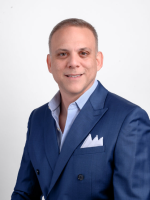For six months, Jenny Staletovich waded through the muck.
Jenny is WLRN’s award-winning environment reporter. Her reporting on pythons overtaking the Everglades recently won a national Edward R. Murrow Award. This time, she focused on the decades-long battle to make the Everglades work as nature intended.
To do that, Jenny put on her wading boots. She slogged through the Everglades with Miccosukee tribal elders and local fishing guides. She plodded through decades of legal wrangling in the name of Everglades Restoration.
At the end, she emerged with a new podcast from WLRN News, distributed by the NPR Network. It’s called Bright Lit Place — a sacred term for the River of Grass that makes Florida special.
But it's dying. The Everglades is just a skeleton of what it once was. In this six-part series, Jenny looks at the struggle to save it — and the costs of failure.
"I think what this podcast tries to do is to point out the flaws, but also highlight the beauty and highlight the fact that it is worth saving," she said. "But you go back to willpower. We just need to make hard choices. And those hard choices are going to mean compromise for a lot of people. We're going to have to just treat the Everglades more carefully and more thoughtfully."
The Everglades is more than just a bucket-list item on a trip to Florida or a go-to field trip spot for middle schoolers. It provides fresh water, flood control and a buffer against rising seas for about 9 million people.
We may not have the footprint, but we can get the function back. And that's what restoration is about.Jenny Staletovich, WLRN's Environmental Editor
Only 20% of the wetlands system has been left untouched — everything else has been crippled by infrastructure.
So in 2000, the U.S. started one of the most ambitious environmental projects ever attempted: Everglades restoration. Not necessarily reverting it back to its former glory but maintaining what's left.
Progress has been sluggish in a time when climate change has only made restoration more urgent.
But Jenny told WLRN’s Sundial that everyone wants to see Everglades restoration succeed.
"There are many scientists … who have modeled out just exactly what we need to do to get the Everglades to function like it did before. We may not have the footprint, but we can get the function back. And that's what restoration is about," she said.

She was joined by Pulitzer-prize-winning photographer Patrick Farrell, who helped document her tireless work.
Patrick said he had to get his hands dirty — but not his camera — to capture the perfect shot. That meant getting his first pair of swamp-appropriate boots at Dick’s Sporting Goods and wading through chest-deep marshes. Some days, it also meant getting precariously close to alligator-riddled waters on an airboat.
But the sheer beauty of untouched Florida made the muck worth it he said, as he recalled one of the days out on the field.
"It was early in the morning. It was just gorgeous and peaceful and quiet except for the birds," he said.
Patrick and Jenny found that the best way to experience the Everglades is to see it through the eyes of the Miccosukee.
Patrick even used a roll of film he had from the 1950s to get optimal wide-angle shots of the Tree Islands, which are patches of forest in the Everglade marshes.
Miccosukee tribal elder Michael Frank grew up on one of these tree islands. Jenny spoke to Frank about seeing his homeland wash away as Florida wrestled to drain the swamp.
"I think, now, that the tribe has become sort of our moral compass in this sort of modern era," Jenny said about speaking to the Miccosukee for the first episode of the podcast.
"We face all these impacts from climate change, so we have this new test before us. And the Everglades is like the midterm and climate change will be the final exam."
Listen to the full episode above. You can catch Sundial Monday through Thursday on WLRN, 91.3 FM, live at 1 p.m., rebroadcast at 8 p.m. Missed a show? Find every episode of Sundial on your favorite podcast app, such as Apple Podcasts, Stitcher and Spotify.









